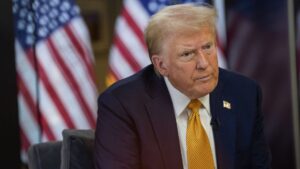Understanding the Potential Impact of Tariffs on U.S. Consumers: Insights from Extreme Investor Network
As economic landscapes shift, understanding the effects of government policy on your financial health is crucial. One key area of concern is the use of import tariffs, which often spur debates among economists, business leaders, and consumers. Following recent announcements from President-elect Donald Trump regarding potential tariff implementations, we present an in-depth analysis of the ramifications these policies may have on U.S. consumers and the economy at large.
What Are Tariffs and How Do They Work?
Tariffs are taxes imposed on imported goods, effectively raising their market price. This tax is initially borne by U.S. companies that import these goods. Yet, it’s essential to recognize that businesses typically pass these costs onto consumers, resulting in increased prices at the checkout. Erica York, a senior economist at the Tax Foundation, succinctly notes: "Either way, there is a cost to consumers."
Potential Price Increases: What to Expect
As tariffs are predicted to roll out, experts indicate that U.S. consumers may see significant price hikes. According to analysis from the Tax Policy Center, an average U.S. household could face an increased financial burden of approximately $3,000 by 2025 due to escalated tariffs. This is particularly concerning for low- and middle-income families who are already navigating the complexities of living paycheck to paycheck.
In fact, past measures taken by Trump, including tariffs on products such as washing machines, solar panels, steel, and aluminum, have already showcased how tariffs can inflate costs across various sectors. Additionally, Trump’s proposition for a universal tariff regime—up to 20% on all trade partners and potentially 60% specifically on Chinese imports—illustrates the potential for widespread price increases.
The Broader Economic Impact: Business Margins, Wages, and Jobs
Beyond affecting consumer prices, tariffs can also exert pressure on business profitability. Higher import costs could lead companies to reduce profits, which in turn may limit wage increases or even result in layoffs. York emphasizes that such economic decisions are often company-specific, suggesting a complex interaction between tariffs and the labor market.
Furthermore, if businesses are forced to tighten their belts, we may see consequential shifts in employment opportunities and wage growth, which are crucial for a thriving middle class.
Navigating the Uncertainty Around Tariff Policies
While President Trump has announced intentions to implement tariffs, the precise details regarding which products and countries will be targeted remain shrouded in uncertainty. This ambiguity raises questions about whether he possesses the executive authority to impose such sweeping tariffs unilaterally. Some market analysts consider Trump’s announced policies as negotiation tactics rather than definitive moves, meant to extract concessions from trading partners.
Barbara Doran, CEO and Chief Investment Officer of BD8 Capital Partners, highlights the unpredictable nature of the situation: “I hope … they really are just negotiating tactics. But they may not be.” Such mixed opinions underscore the complexity of predicting how these changes will unfold in the real economy.
Conclusion: Staying Informed and Prepared
As the situation evolves, it is imperative for consumers and investors alike to stay informed about tariff implications. At Extreme Investor Network, we believe that empowered individuals are better equipped to navigate these economic changes. By understanding the potential impacts of tariffs—both at the checkout and within the broader economic context—readers can make more informed decisions that protect their finances.
For ongoing updates and in-depth analysis of how to manage, grow, and protect your money amidst changing policies, revisit our blog regularly. Together, we can make sense of the evolving financial landscape and ensure your investment strategies align with your financial goals. Stay tuned for more insights from Extreme Investor Network!

